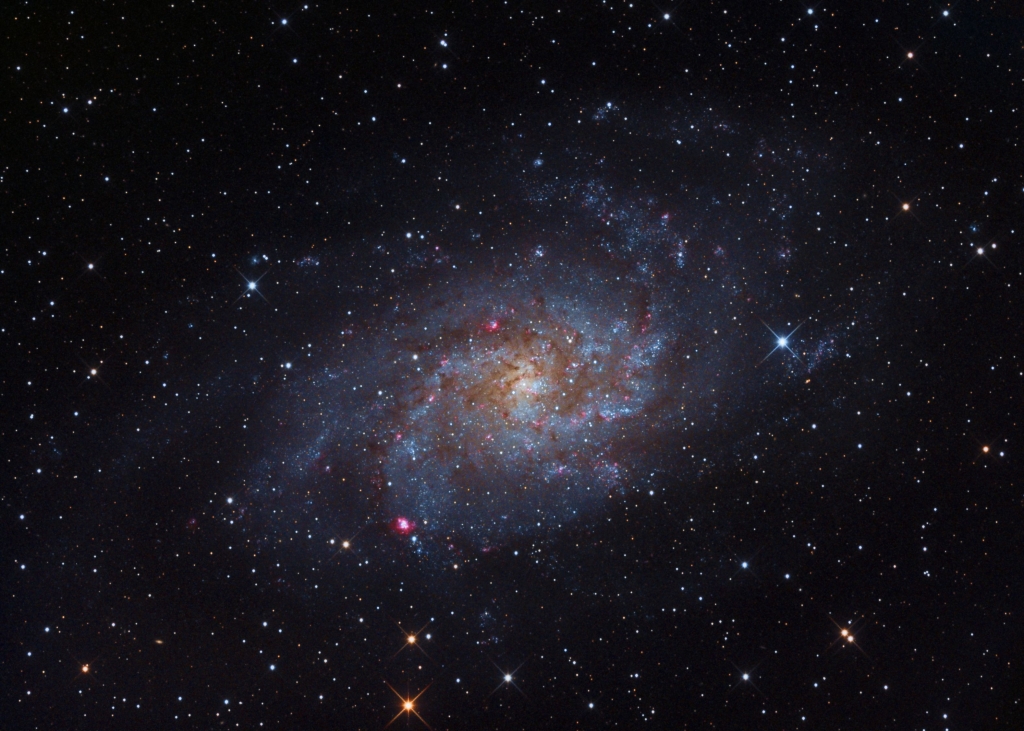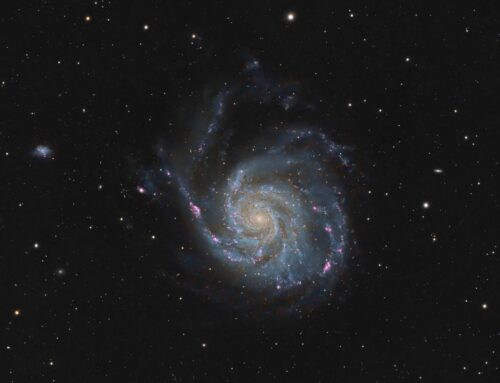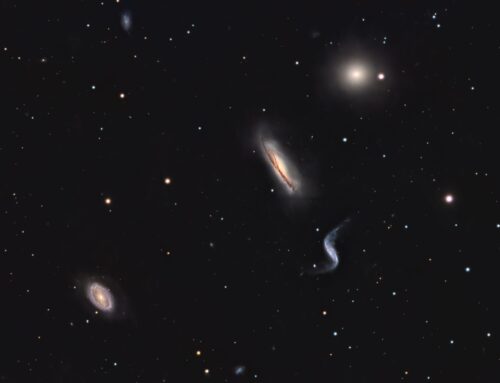M33, First Light with ASA Astrograph
Click image for full size version
October 2, 2011 — First Light with ASA 10″ f/3.6 astrograph; Published in SkyNews Magazine Jan/Feb 2012 It took me only 8 days (5 of them cloudy or rainy) to get my new scope up on the mount and get everything purring. I think the attached image shows that everything is working very, very well. With this design of scope, the critical focus zone is tiny, so it’s important to keep the focus nailed. This telescope has a high quality electronic focuser, which automatically adjusts the focuser to compensate as the temperature drops. Minor focus differences with different filters are also accounted for, with the focuser automatically moving every time the filter is changed. The scope also has a strong fan behind the primary mirror which blows air along the walls of the tube, minimizing tube currents and keeping dew at bay (at least so far, I haven’t used a dew shield). I’m pretty excited by my first light result! I’m really happy with the stars. M33 is a spiral galaxy. It’s one of the closest large galaxies and is a fine visual sight in a large scope under dark skies. I’ve shot this before a few times. At the time, I was happy with those shots. I compared side by side with this one and was blown away by how tight the stars are with this scope. This was shot on a night with very good transparency (it was clear) and very bad seeing (it was turbulent and stars were twinkling like mad). I can’t wait to see what it will do under even better conditions. Tekkies: 31x2m L, 3x10mR, 3x10mG and 2x10mB unbinned frames acquired with QSI583wsg camera, Astrodon LRGB Gen-2 filters, and a 10″ ASA reflector at f/3.6 on a MI-250 mount, from my SkyShed in Guelph. Thin crescent moon for RGB; no moon for L, no cloud, very good transparency and very bad seeing. MaximDL was used for acquisition, guiding, calibration, alignment and stacking the LRGB sets. A SX Lodestar camera was used to guide through the QSI’s guide port. All processing was done in PixInsight. Image edges were cropped to remove misalignments due to dithering. Dynamic Background Extraction and Colour Balance were applied. Then a histogram stretch, SCNR noise reduction, ACDNR noise reduction followed by another stretch, HDR Wavelets, masked sharpening, curves, small scale masked UnsharpMask, LocalHistogramEq with stars masked, saturation. Image scale for this telescope/camera combination is 1.23 arcsec/pixel.







Leave A Comment